So Elon's new Wikipedia clone, grokipedia.com, is actually 10x as accessible as Wikipedia itself.
This is despite it being a React / Next.js ap, while Wikipedia is a classic, server-rendered site.
![How To Upgrade To Fedora 43 From Fedora 42 [Step-by-Step Guide]](https://fedi.ml/photo/preview/640/718637)
How To Upgrade To Fedora 43 From Fedora 42 [Step-by-Step Guide]
This step-by-step guide explains how to upgrade your Fedora 42 system to the Fedora 43 version using the DNF system upgrade plugin.sk (OSTechNix)
The Walton family (who own Walmart) are worth over $400 billion, yet many of their employees are on SNAP.
Bezos is worth over $400 billion, many Amazon employees require SNAP.
The people who need help are not the problem.
It’s corporate greed. It’s an unwillingness to pay a living wage.
A thief trashed Calgary's The Camera Store, making off with $71,500 in cameras and lenses
dpreview.com/news/6757730480/a…
Crime. In Calgary.
С обновлением интерфейса Youtube на 24" 1080 мониторе я могу видеть на странице только 6 видео или 3 видео и 5 шортсов. Хотя, зачем вообще показывать шортсы в рекомендациях на десктопе?
Вот бы еще в самом гугле на одном экране было видно только первые 2 результата, одним из которых был бы "обзор от ИИ", вот тогда это было бы UI consistency
#ClimateChange #Hurricane #Mellisa #Catastrophe #FossilFuels
dnes asi prvý krát som použil "vieme odkiaľ vietor veje" a ani si nie si istý neviem odkiaľ
edit: teda viem presne len neviem odkiaľ to mám
Random tip for comparing the performance of Rust and C programs that use stdout:
Rust stdout is line-buffered, even when redirecting to a file.
Glibc (and most C libraries I know of) are smarter than this, and will switch to a more aggressive buffering scheme if they aren't writing to a terminal.
Running the program _under hyperfine_ is enough to trigger this behavior, because hyperfine takes over the stdout stream. Glibc senses that this is not a terminal and turns on a 4096-byte buffer; Rust continues making one syscall per line.
So if a Rust program that prints stuff seems to lose a performance advantage over a C counterpart when run under hyperfine, it's worth stracing to check.
(There's continuing talk of fixing this default in Rust, but it's not fixed yet.)
Sensitive content
Vorige keer "strategisch" op GroenLinks gestemd. Geen slechte partij, een groot en "breed acceptabel in de samenleving" links hebben is goed. Maar als de enige opties links en steeds extremer rechts is blijft "breed acceptabel" verder en verder naar rechts schuiven.
Dit keer zal ik volgens mijn hart stemmen. Om links weer terug naar links te proberen te trekken. Laten we dat allemaal overwegen. Ik wil dat links weer normaal wordt. Dat liefde weer normaal wordt in plaats van deze haat.
Sensitive content
Dat is niet te zeggen dat ik niet blij ben met GL stemmers. Het blijft een goede stem en een sterk "breed acceptabel" links blijft goed om te hebben. Maar overweeg in plaats van enkel strategisch ook volgens je hart te stemmen. Want 1 zetel is zo veel meer voor een kleine dan een grote partij.
Mag GL lekker groot blijven, maar klein links ook gewoon eens groeien 
Sensitive content
SuspiciousDuck reshared this.
Bluefin knows what's up. It's been a joy to collaborate with and fix issues for everyone!
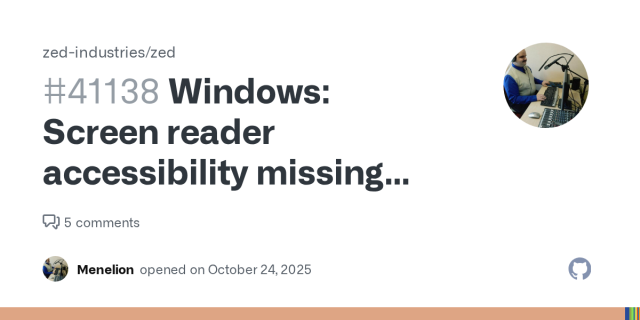
Windows: Screen reader accessibility missing completely
Summary Zed is absolutely inaccessible for screen reader users on Windows. Tested with latest JAWS and NVDA versions. Description Steps to trigger the problem: Install Zed on Windows 11. run Zed wi...Menelion (GitHub)
So one thing I notice about #blind Internet culture: even back on Twitter, and now here in the #fediverse, blind people tend towards having discussions in giant threads, sometimes with as many as 10-12 people in them, that can often stretch on for days. I rarely (if ever) see sighted culture do this. I wonder why? It's not a criticism, it's just interesting to me. Maybe because Discord and other chat apps were historically less #accessible, so blind culture tends to use the fediverse more as a discussion platform? Or maybe it's something UI related that makes it easier for blind folks to track giant threads of doom? The few times I've been involved in this style of discussion with sighted folks, they've become confused and begged for everyone to move to Discord or Slack or somewhere. On the other hand, I rarely see blind people do a single, lengthy post broken up and threaded the way sighted people do, with (1/N) at the end. We tend to just move to instances with longer character limits, or put our long form thoughts on a webpage or something.
Edit to add: I'm pleased to say that this post has now become a perfect example of the thing I was talking about; my last post in the thread included the phrase "transsexual furry puppygirls". It makes me happy that people unfamiliar with what I'm talking about need do nothing more than look at the thread on this post.
modulux reshared this.

These smart beds began roasting their owners during AWS outage
Eight Sleep smart beds got stuck in position and refused to cool down during Monday’s massive Amazon cloud outage.Ben Patterson (PCWorld)
🇨🇦Samuel Proulx🇨🇦 likes this.
🇨🇦Samuel Proulx🇨🇦 likes this.
m nice. jk, but seriously though, I don't need Alexa or similar for that. They can just wait, if they've forgot their keys. Or rather, they must. Yeah it would be useful to let someone in while you're away in person, though then I'd want a doorbell to check wether the person in front of my door is actually the one I want in my house.
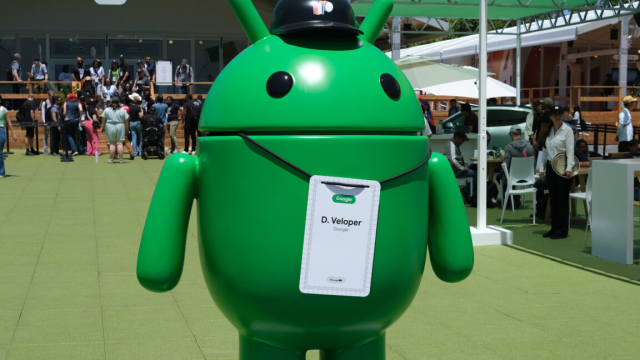
Google will block sideloading of unverified Android apps starting next year
Google says it’s no different than checking IDs at the airport.Ryan Whitwam (Ars Technica)
After 2 years as the first Managing Director of the Foundation, Robin is passing the baton — "I'll see you in the wild blue yonder."
Amandine will serve as acting MD while the Foundation finds the right person to take the org to new heights. matrix.org/blog/2025/10/farewe…
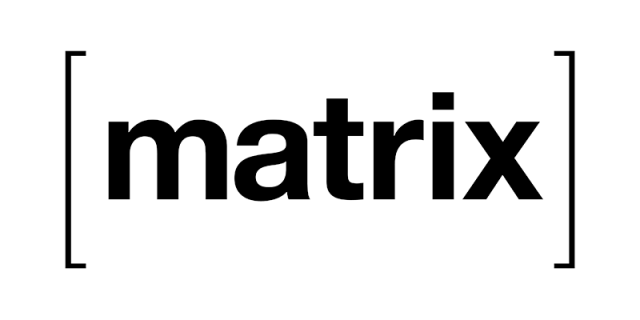
A fond farewell from Managing Director Robin Riley
Matrix, the open protocol for secure decentralised communicationsRobin Riley (matrix.org)
The write-up of my new graph layout algorithm for SpiderMonkey is finally live.
We built a custom layout algorithm for JS and WASM that follows the structure of the source code. No more spaghetti nightmares from Graphviz, and thousands of times faster.
spidermonkey.dev/blog/2025/10/…

Who needs Graphviz when you can build it yourself?
Exploring a new layout algorithm for control flow graphs.Ben Visness (SpiderMonkey JavaScript/WebAssembly Engine)
Sensitive content
Me, occasionally being in the factory area of the company: this is for the light incidents. The heavy ones are: run for your life, and if you see a body bleeding from all cavities, do not stop to help, or you will be next. A team in proper hazmat suits arrive soon to provide help.
And speaking of fancy gases. I've heard a story about people constructing some apparatus for physical measurement. And for that they needed to have a gas with a very specific refractive index. It is possible to mix some gases with different indexes to reach the result, but I've heard it is a tedious process. Apparently those people wanted to avoid that. So, they have found in the catalogue the gas which was perfect for their needs, considering the refractive index, and they have placed an order for the purchase in the internal system. And because this particular gas has not been ordered previously, the order went through local health and safety department for vetting. Few days later the engineers were complaining about those "assholes from h&s department, rejecting the purchase".
Apparently, those assholes from h&s had checked also other properties of the gas. And I wish to be a fly on the wall in the room they did that. The gas was a neurotoxin. Of a very fancy kind. It is almost asymptomatic. The first observable symptom was a merriness. But if you observe it, and start investigating, it's already too late. At least you will die happy. I do not remember well, but I have impression, that this gas was also explosive. The point if this story is: please give some respect to those assholes from h&s. They can save your life 😅
Also, please do not look into the laser beam with your remaining eye.
TIL that the president of Signal believes that people who run Mastodon and/or Matrix servers do so "in most cases" on hyperscaler* infrastructure.
This is my Mastodon server. And its UPS. And its networked KVM for when things get really hairy.
It's also my Matrix server. And Nextcloud. And Git. And Home-Assistant. And Jellyfin. And SearXNG. And Peertube.
When people objected to her claims, she doubled down and proclaimed condescendingly that we "don't have a clear understanding of this space".
TIL that I don't feel confident in recommending people to use Signal. Something's very off here.
*) "hyperscaler" basically means the big cloud infra providers with provisioning APIs that allow you to scale your resources up/down automatically with usage
Signal's president claimed it takes billions to replicate the availability and reliability of "hyperscalers" (AWS/Google/Microsoft/Cloudfare) that Signal uses.
#chatmail and #deltachat are about disproving this claim by
1) making relays super cheap (DONE)
2) enabling chat profiles to use multiple relays redundantly (WIP)
3) distributing relay knowledge among chatters (TBD).
Fat servers, corporate overlords and billionaires: not needed and better to not exist for a convivial e2ee future :)
@h3artbl33d @tomli don't forget iCloud also leaks your hostname (weirdly not your IP), which may or may not be a problem depending on your hostname
(I accidentally posted this from another account on mastodon.social, don't ask 😅)
(Non gender specific) Dude! I had to fight to get people to use Element/Matrix and when the jank got too much I had to fight to move them to Signal. I'm tired and done with all that shit.
But you're saying all the right things so I'm looking at my soapbox and megaphone and thinking I may have to drag them out again... 🙂
Started using Delta Chat quite recently as it seemed like the best libre (decentralized, e2ee) alternative to WhatsApp.
What would be a good way for me to learn about what Delta Chat is doing on a technical level that other IM apps are not?

Usable end-to-end security with Delta Chat and Chatmail
Over the years, Delta Chat has matured to be an easy-to-use, secure, and even fast decentralized FOSS messenger app for all platforms.Pass the SALT Archives
Sensitive content
is your app available without relying in so-called sideloading/jailbreaking?
That, plus push notifications, and wondering how you can overcome the network effect.
@Mer__edith is a liar to the teeth, you want a proof ?
use tor on your device and call a friend.
the only issue will be the time to connect after it will be flawless, so her "we need them" is a corporate lie.

Reflections: The ecosystem is moving
At Open Whisper Systems, we’ve been developing open source “consumer-facing” software for the past four years. We want to share some of the things we’ve learned while doing it. As a software developer, I envy writers, musicians, and filmmakers.Signal Messenger
I don’t think that spreading poorly substantiated accusations of technical infidelity against signal helps your mission, or anyone else.
I think it’s cool that you’re writing your own messenger software, but please spread the word about it by advertising how it is good, not by trying to push others down who fight for the same causes as you.
...so the 4-5 big email providers all "your" infrastructure relies on is surely not using any cloud infrastructure at all, right? right??
oh and i love doing all these encrypted audio and video calls using delta chat. oh, wait... no audio. no video.
i have one question to you guys:
why are you comparing two different things here?
¯\_(ツ)_/¯
@blazr with 2.22.0 you can try out calling, look for "Debug Calls" in the experimental settings :)
Instead of big email providers, we actually recommend self-hosting chatmail.at/relays, or using one of the existing public ones. This is basically how we aim to do scaling, horizontal instead of centralized.

Chatmail: Relays
Chatmail provides FOSS infrastructure for interoperable, secure, speedy and reliable end-to-end encrypted messaging. Check out clients as Arcane Chat, Bots or Delta Chat today!chatmail.at
I really hope you can pull this off. However, having worked with distributed, decentralized systems, I think the difference between a centralized system and yours will always be a limitation to adoption.
But I hope you'll write lots of blog posts for others to build upon :)
Google is going to make HTTPS required by default in Chrome in a year.
In the post there is quite a bit of talk about the problem of obtaining a cert for local network names. Hopefully their push to make everything-HTTPS will include local network addresses too. We really badly need it.
They kind of seem to say they will, but it's all talk until shown otherwise: "In the future, we hope to work to further reduce barriers to adoption of HTTPS, especially for local network sites."
security.googleblog.com/2025/1…
#chrome #security #selfhosting
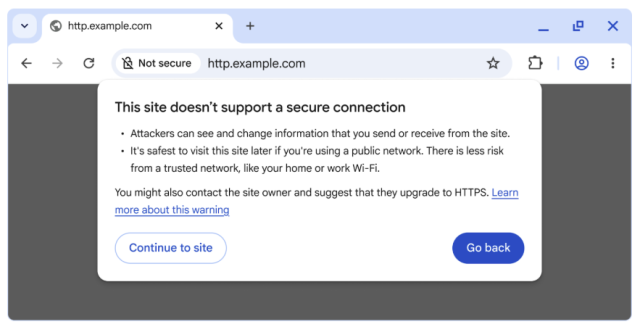
HTTPS by default
One year from now, with the release of Chrome 154 in October 2026, we will change the default settings of Chrome to enable “Always Use Secu...Google Online Security Blog
"there's no realistic alternative to AWS and the other hyperscalers." (for signal)
except federation. -> #matrix
it.slashdot.org/story/25/10/28…

Signal Chief Explains Why the Encrypted Messenger Relies on AWS - Slashdot
An anonymous reader shares a report: After last week's major AWS outage took Signal along with it, Elon Musk was quick to criticize the encrypted messaging app's reliance on big tech.it.slashdot.org
GNOME 49 (which was shipped in freshly released Fedora 43 and Ubuntu 25.10 and also in rolling distros like openSUSE Tumbleweed and Arch) has a bug with some apps in XWayland, where they'll freeze if you have more than 1 screen.
Details:
gitlab.gnome.org/GNOME/mutter/…
gitlab.gnome.org/GNOME/mutter/…
The only workaround is to turn off all monitors except one. Or, if your app supports it, run with native Wayland instead of XWayland. Or wait for a minor release of Mutter before upgrading to GNOME 49.

Xwayland programs become unresponsive (#4216) · Issues · GNOME / mutter · GitLab
Thunderbird (email) and RawTherapee (photo processing) become unresponsive. Thunderbird after a period of use - the UI becomes unresponsive to mouse or keyboard, though tool tips...GitLab
I guess I shouldn't upgrade.
> Or, if your app supports it, run with native Wayland instead of XWayland
Yeah things don't fix themselves.
@hub Yeah, hold off for now, until there's a fix. (I'm going to roll back my Silverblue systems to Fedora 42.)
Another workaround would be to use X11 as a server, but that doesn't exist anymore, except as a COPR: lists.fedoraproject.org/archiv…
It's unfortunate that Wayland is the only session for GNOME now and also broken in this release (for XWayland apps, with multi-monitor support).
It works fine in GNOME 48, KDE, and elsewhere. This is a bug in Mutter in GNOME 49. Hopefully it'll be fixed soon.
those wanting to rid of X11 probably never tried to use audio production software like Ardour. Anything actually supporting VST plugins.
(no need for proprietary crap to suffer)
Sadly, some apps like Inkscape and darktable will freeze completely when you're using them in XWayland mode. And these same two apps don't fully work in native Wayland yet.
(In native Wayland:
darktable's submenus try to render offscreen and it closes the window.
github.com/darktable-org/darkt…
Inkscape's dropdowns don't render in the right place, if they render at all.
gitlab.com/inkscape/inbox/-/is…
It's better than freezing, but still gets in the way of actual usage.)
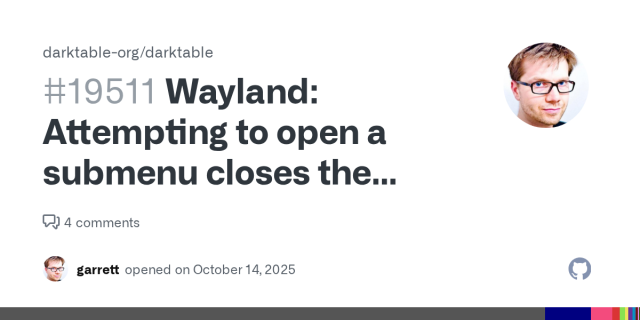
Wayland: Attempting to open a submenu closes the menu
Is there an existing issue for this? I checked and did not find my issue in the already reported ones Describe the bug Running darktable natively in Wayland seems to almost perfectly work! Huge kud...garrett (GitHub)
for Darktable even with XWayland...
github.com/darktable-org/darkt…
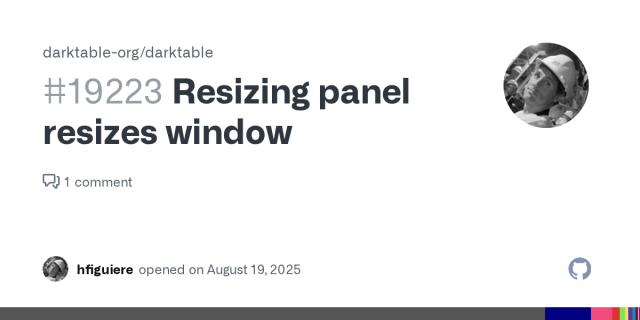
Resizing panel resizes window
Is there an existing issue for this? I checked and did not find my issue in the already reported ones Describe the bug Darktable 5.2.1 from Flathub Stock GNOME 48 on Fedora Silverblue (it's gnome-s...hfiguiere (GitHub)
@hub I've found that darktable now works better in native Wayland than XWayland, except for the submenu issue (where it closes the menu when it tries to show a submenu, as it attempts to draw it off screen and hits a bug).
Too bad it defaults to XWayland and has that bug.
(Things like drag and drop into darktable even works in native Wayland, but not in XWayland.)
Fedora Linux 43 is here! What do you get with this update?
* New Anaconda WebUI installer on all desktop editions and spins
* @gnome 49 and being Wayland only
* Fedora CoreOS now based on bootc instead of rpm-ostree
* Under the hood changes like RPM 6.0
* All your favorite versions of Fedora getting up to date!
Happy upgrading!
➡️ fedoramagazine.org/announcing-…

Fedora Linux 43 is here! - Fedora Magazine
I’m excited to announce my very first Fedora Linux release as the new Fedora Project Leader. Fedora Linux 43 is here! 43 releases! Wow that’s a lot.Jef Spaleta (Fedora Project)
What's new in Fedora KDE Plasma Desktop 43?
* New Anaconda WebUI installer
* Automatic updates for Kinoite (which is based on Fedora KDE)
* Latest updates from @kde Plasma 6.4.5 with improvements in tiling, color management, accessibility, and more!
➡️ fedoramagazine.org/whats-new-i…
#Fedora #FedoraKDE #KDE #Linux #OpenSource

What’s new in Fedora KDE Plasma Desktop 43 - Fedora Magazine
Fedora has released Fedora KDE Plasma Desktop Edition 43 to the public. The Fedora KDE Plasma Desktop Edition is well suited for many needs. It combines the reliable and trusted Fedora Linux base with the KDE Plasma Desktop environment.Troy Dawson (Fedora Project)
- Meeting time proposals 📊 (19%, 18 votes)
- Birthday calendar 🎂 (60%, 56 votes)
- Auto status updates 🟢 🔴 (9%, 9 votes)
- Other (please comment) (10%, 10 votes)
nechodí stále nechodí, čo je s ňou, s ňou, je mi biedne
nečakám, stále nechodí, už sú zrátané dni letné
uhm
Any #ZFS folks want to offer me an opinion on the following? I have 2 ZFS pool of raidz2 with 7 2TB SAS drives each (about 11.5T). I want to add a LOG drive. I have a single SAS SSD that's 300G. When I suggested using a 1TB LOG drive earlier, someone said that was way too much. (which is why I picked up a used 300G SSD)
My question is whether it makes sense (is possible) to partition that drive into 2 partitions and have one pool use 1 partition as a log drive (e.g., 150G) and the other pool use the other partition as a log drive on the same physical device.
Is this going to be worse because it's just too much IO on one device? Is it reasonable? Any other ideas?
oh gosh, unless you know you are doing a lot of synchronous writes (almost never; databases and NFS mostly... maybe VMs???) you do not need a LOG at all.
If you do add a LOG, it just needs to be large enough to buffer the writes until they're flushed to the other vdevs. You honestly could get away with something as small as like 8GB for a low IO / homelab type environment. But you won't find a modern drive that small, so if you're going to do this just make it as small as possible. Pick quality over quantity here. SLC drives (do they even exist anymore?) are of course ideal.
Splitting the LOG device between multiple zpools isn't crazy. I have a tiny partition I use for LOG and then use the rest for L2 ARC which is another option to maximize the usage of your fast storage.




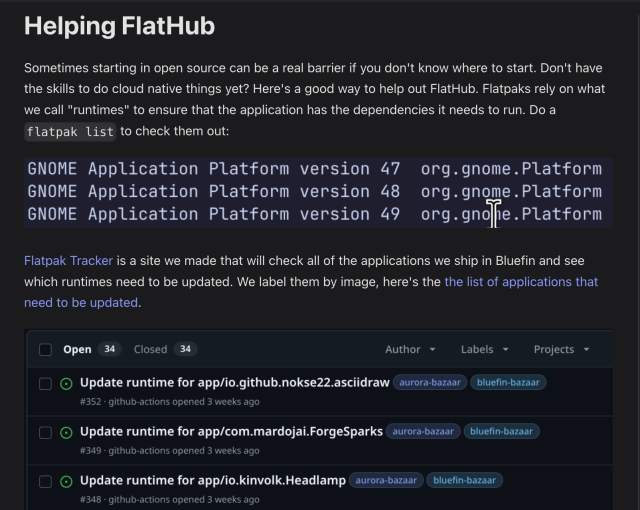


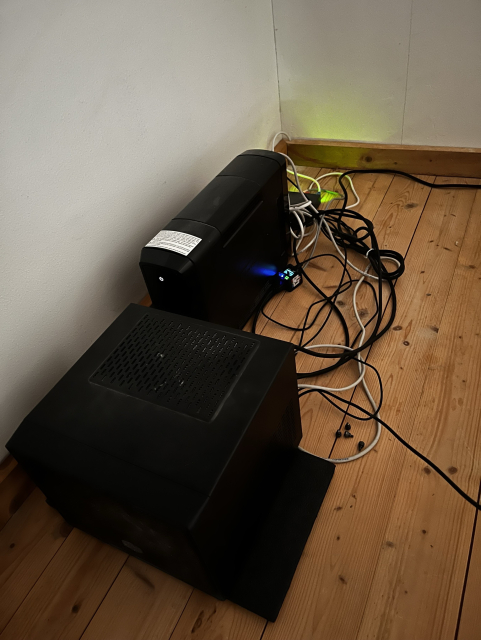


victor tsaran
in reply to Mikołaj Hołysz • • •